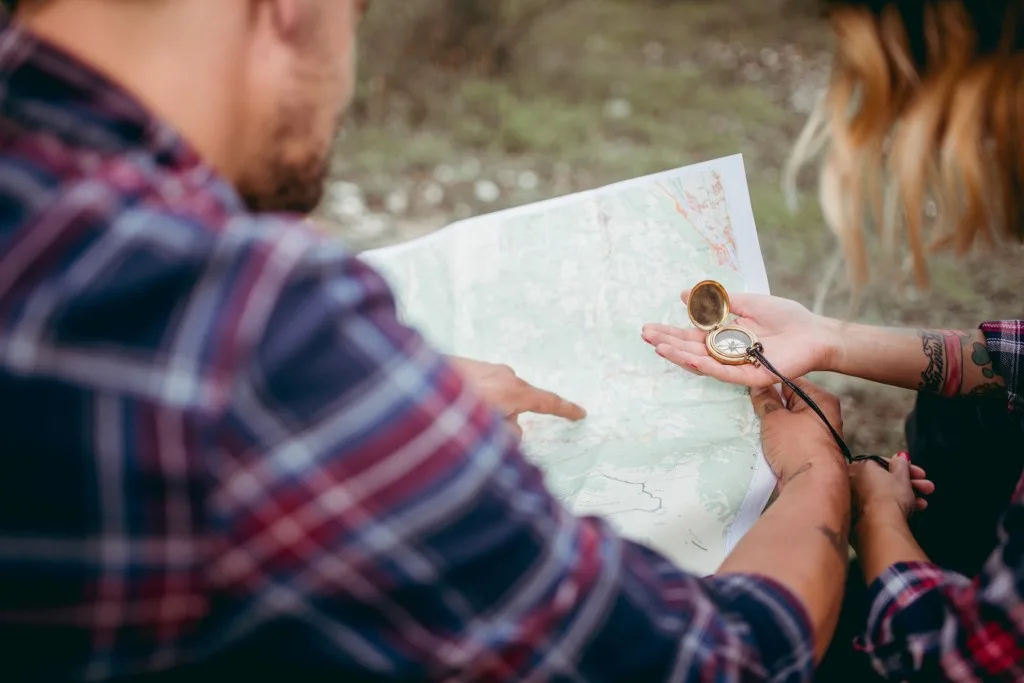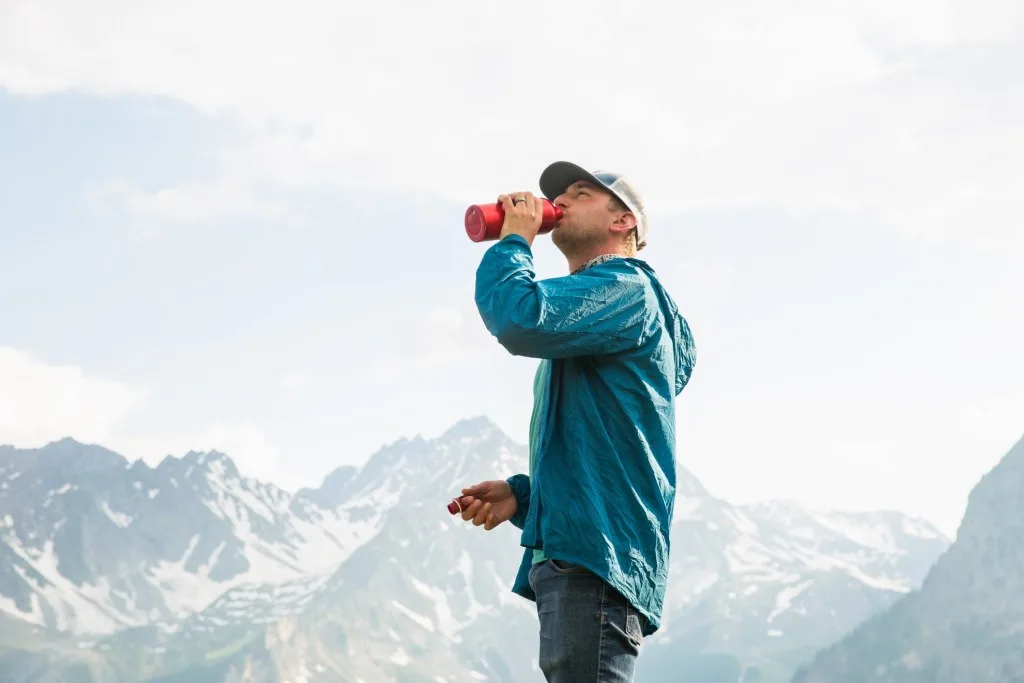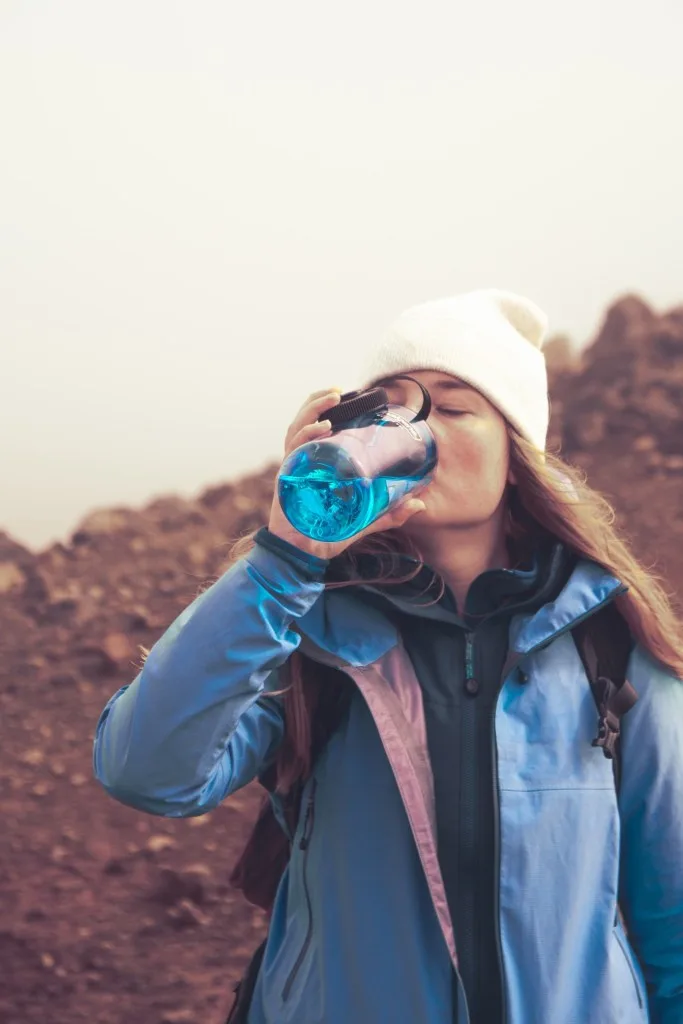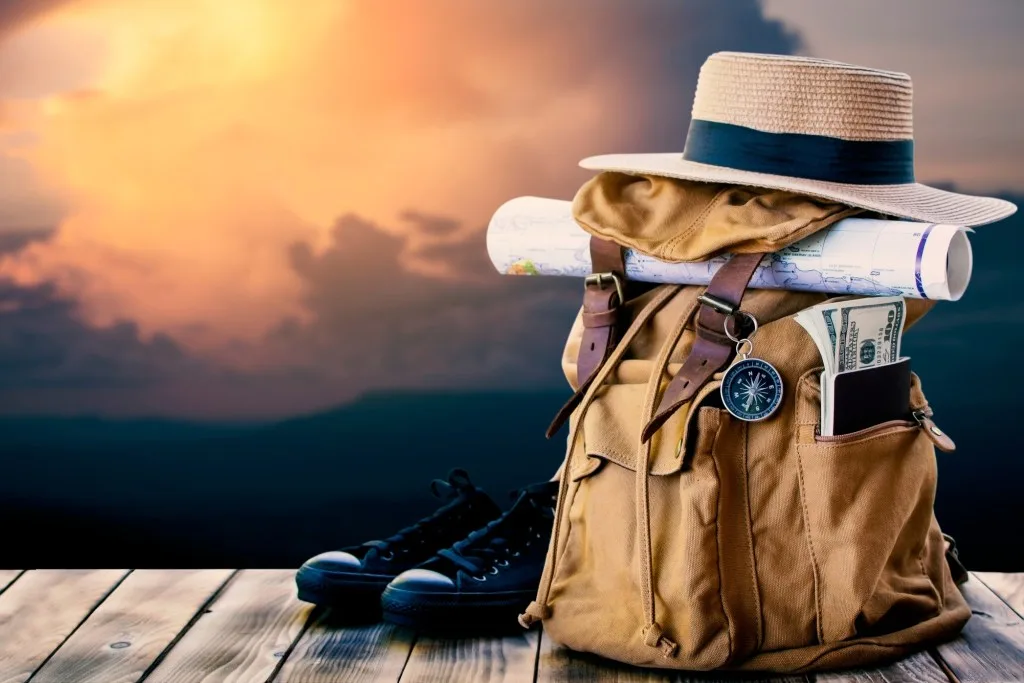5 Surprisingly Common Hiking Mistakes
Hiking is our favorite way to connect with nature. As full-time RV travelers, it’s also the easiest and least costly way to explore new areas. However, it took us many failed attempts to learn some of the most common hiking mistakes.
To be honest, we weren’t hikers before we embarked on full-time RV life. Our hometown in South Alabama doesn’t have many epic trails.
But, the moment we traveled out west, we fell in love with hiking.
We’re sharing these 5 common hiking mistakes to help you avoid the newbie errors we made!
Let’s dive in.

Overestimating Your Experience or Abilities
The leading cause of search and rescue efforts (and costs) in national parks is hikers underestimating their physical ability or trail/hiking knowledge, by getting too tired to continue or getting lost.
And no, getting rescued is generally not free, nor is it guaranteed.
Solution: When you embark upon any hike, do the work ahead of time. Look at maps, ask for advice, be prepared for the weather, know the elevation gain and have an understanding of the terrain.

If you find yourself in a situation where you think you may be getting in over your head, be ok with turning around and heading back. That summit will always be there.
If you take an unnecessary risk, you might not.
In attempting something you’re not prepared for, you put yourself and others at risk.
Wearing Inappropriate Clothing or Footwear
There’s a reason we have shoes called hiking boots. They are made for hiking.
There’s also a reason you may have heard to not hike in cotton. When it gets wet, either from rain, snow, or sweat, it stays wet. And hiking with wet clothing, including socks is not fun.
The journey you embarked upon may already be a hard one; there’s no reason to make it miserable. Hiking is supposed to be fun!

Solution: Take the time ahead of time – meaning days or weeks before – to find the proper hiking shoes that fit you. Buying a pair of hiking shoes an hour before you go hiking is a brilliant way to create blisters. You need time to break in your shoes, so when you are walking in them for hours, they already feel as comfortable as your flip flops (well, maybe not that comfortable, but your feet will be protected.)
You’ll have to decide what’s right for you: hiking boots, hiking shoes, or hiking sandals.
Generally hiking boots will be your best bet because they give support to your soles and your ankles. Hiking shoes will still support you just not as much as boots. Hiking sandals are not really recommended as they don’t protect your toes or much else on your feet except your soles.
However, the shoes really do depend on the type of terrain, the length of the hike, and what your feet need to be safe and comfortable. Hiking in flip flops is a definite no-no if you’d like to continue your hiking dreams. Broken ankles don’t really allow for that.

Wear materials that can handle moisture such as polyester, nylon or wool. And always either dress in layers or bring layers, especially an extra pair of socks, a rain jacket, a warm jacket and a hat both for protection from the heat and the cold.
Regardless of how much you studied the weather beforehand, it can change in an instant, especially if hiking at altitude. You could be starting your hike in a tank top, and one thousand feet of elevation gain later on top of that summit, you could be in a hat and gloves with your rain jacket on as the sleet pounds down upon your upturned face.
Not Following Leave No Trace
The Leave No Trace principles, commonly known as LNT, are not meant to deter you from enjoying the beauty that our world has to offer, but instead, they are meant to give you guidelines so you know exactly how to enjoy this beauty without destroying it.
However, when you choose not to follow these, you are putting yourself, your planet, and others in danger. Both in danger of needing help from an injury and in danger of losing access to all the places you want to explore.

Solution: Knowing the seven LNT principles will help you from rarely making any of the five common hiking mistakes again. In fact, when you know and follow these principles, you are helping to build a world in which we can continue to enjoy the spaces that take us away from the stress of the typical urban world.
- Plan ahead and prepare.
- Travel and camp on durable surfaces.
- Dispose of waste properly.
- Leave what you find.
- Minimize campfire impacts.
- Respect wildlife.
- Be considerate of other visitors.
Not Bringing Enough Water or Snacks
Dehydration is a very real thing – that and not having enough calories to get you where you need to go – are both common hiking mistakes that can cause severe problems. Did you know, for instance, when you are thirsty, your body is already dehydrated?
If you’re feeling shaky or nauseous, your blood sugar levels could be off. These both can result in your body not responding the way it needs to when hiking.

Solution: You need to take in more calories when you are burning more calories. Hiking to deplete your body of calories should not be a part of your weight loss plan. Your body needs nourishment when you are making it work.
Throw an apple or two into your backpack. Peanut butter and jelly sandwiches are awesome quick snacks to give you energy on the go. Oranges are brilliant to give you that sweetness and burst of energy. They also taste great on a hot summer day.
Even if you just ate lunch before your hike, take snacks with you. You never know when you might need to refuel, and the extra weight will not be extra at all when you take a wrong turn and your hike turns into four hours instead of two.
The same applies with water.

Yes, water is heavier, and you cannot carry all the water you need when going on a multi-day backpacking trip, but that’s what water purification tablets, Life Straws and water filters are for.
Do the work, plan ahead, know your water sources.
If you forget food, you’ll ultimately be ok. Forgetting water could result in a very different story. One more thing on water. Drink it! Even if it’s not a hot summer day, your body still needs water when exerting itself. And no, beer nor Gatorade count as water.
For both food and water, the general rule is to bring a bit more than you think you need. It’s an easy insurance policy that costs you nothing. Make it a rule of thumb and toss an extra snack and an extra bottle of water in your pack every time you head out the door. At the very least, you’ll make a friend very happy when they realized they left their water at home.
Starting Too Late in the Day
Night follows day every day. It’s a given. It always happens. Yet we still struggle with this very real common hiking mistake, starting too late. Temperatures drop, trails become difficult to see and your chances of taking a wrong turn become very real when we lose daylight.

Solution: Get ready for your hike the night before and you can avoid these five surprisingly common hiking mistakes with ease, especially starting too late in the day. With all of your gear ready and your alarm set for the morning to give you an easy start, you’ll feel energized and excited for your hike, instead of tired from already working all day.
With an entire day ahead of you, you can choose to saunter instead of hike. You’ll have time to stop and smell the wildflowers or enjoy a sit spot where you simply watch nature unfold around you.
More importantly, if you’re hiking in the mountains above treeline and getting an early start, you’ll avoid the afternoon thunderstorms that inevitably roll in, possibly dropping some snowflakes and more than likely lighting up the sky with lightning.
Hiking Tip: Always Pack the 10 Essentials (also known as the 10 Essential Systems)
The easiest way to avoid these 5 surprisingly common hiking mistakes is to always pack the 10 essentials.
This list originated from a Seattle-based organization called The Mountaineers.
Although it was created in the 1930s geared towards climbers and other outdoor adventurers, it still holds relevance today for backpackers, avid outdoor people, and day hikers alike. By carrying these essentials with you every time you hike, you’ll be better prepared for almost any emergency that could arise.
- Navigation: map, compass, altimeter, GPS device, personal locator beacon (PLB) or satellite messenger
- Headlamp: plus extra batteries
- Sun protection: sunglasses, sun-protective clothes and sunscreen
- First aid: including foot care and insect repellent (as needed)
- Knife: plus a gear repair kit
- Fire: matches, lighter, tinder and/or stove
- Shelter: carried at all times (can be a light emergency bivy)
- Food: Beyond the minimum expectation
- Extra water: Beyond the minimum expectation
- Extra clothes: Beyond the minimum expectation

Those 5 Common Hiking Mistakes Can Take a Hike
Just as our RVs take us anywhere in the country, our feet can take us anywhere, too. Sometimes, though, anywhere can be a bit more than we bargained for. We travel the country seeking the beauty in places, and we are bound and determined to get there.
So, when those hikes become more than we bargained for, we will still be ok because we planned for the unknown. We do it everyday when planning our RV road trips.
We take great care and skill when packing up our rigs to ensure the safety of our rigs, the safety of our family, and the safety of others. Knowing these five common hiking mistakes, we will now take great care and skill when packing up our packs to ensure the safety of our rig (our body), the safety of our family, and the safety of others.
Those five common hiking mistakes can, well…take a hike.

Discover the Best Free Camping Across the USA
To be honest with you, we hate paying for camping. There are so many free campsites in America (with complete privacy).
You should give it a try!
As a matter of fact, these free campsites are yours. Every time you pay federal taxes, you’re contributing to these lands.
Become a FREE CAMPING INSIDER and join the 100,000 campers that love to score the best site!
We’ll send you the 50 Best Free Campsites in the USA (one per state). Access the list by submitting your email below:
About LNT…I was a scoutmaster for many years. I grew up with a Dad who was a smoke jumper and loved the backwoods experience. Consequently, I have spent a lot of time in the wilderness and done a lot of hiking. After seeing all the mess left by folks, who’s Mom’s were not there to pick up after them, my wife and I typically carry a few garbage bags with us to pack out the trash we find. We always return heavier than we left.